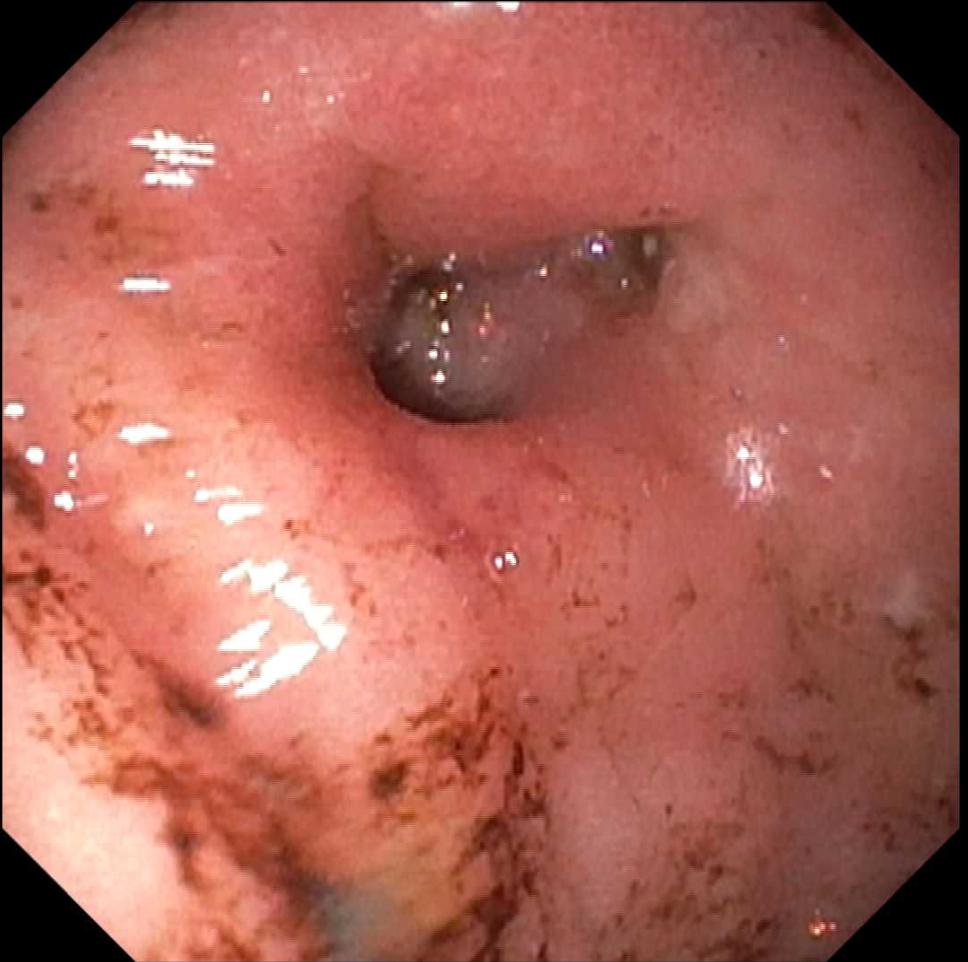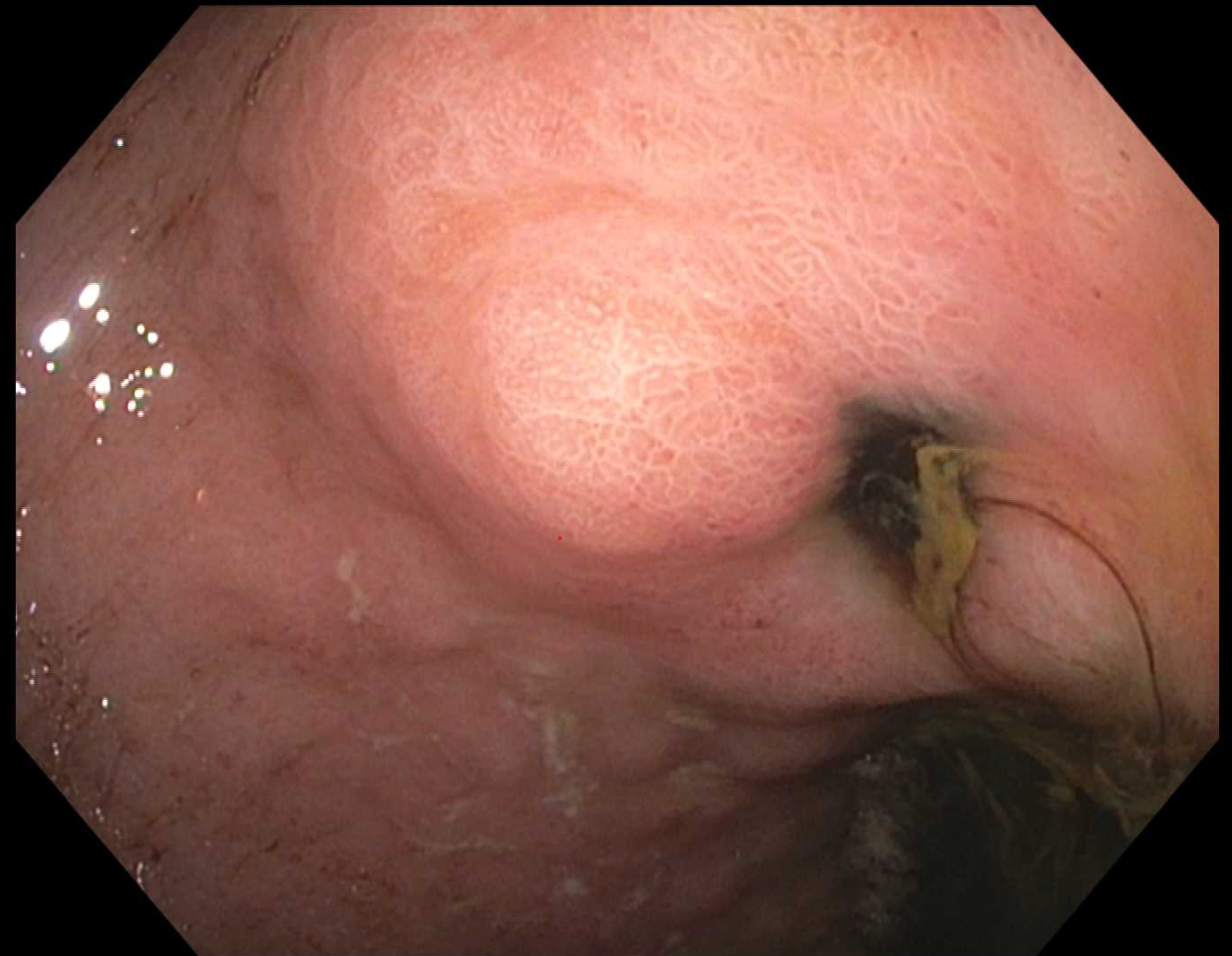Monday Poster Session
Category: Infections and Microbiome
P3452 - Not All That Narrows Is Cancer: A Reversible Case of Gastric Outlet Obstruction
Monday, October 27, 2025
10:30 AM - 4:00 PM PDT
Location: Exhibit Hall

Karan J. Yagnik, MD (he/him/his)
Monmouth Medical Center, Robert Wood Johnson Medical School of Rutgers University
Long Branch, NJ
Presenting Author(s)
Karan J.. Yagnik, MD1, Maria Gabriela Rubianes Guerrero, MD2, Jason Amposah, MD2, Jennifer Harley, MD3
1Monmouth Medical Center, Robert Wood Johnson Medical School of Rutgers University, Long Branch, NJ; 2New York Medical College/Metropolitan Hospital Center, New York, NY; 3NYC Health + Hospitals/Metropolitan, New York, NY
Introduction: Gastric outlet obstruction (GOO) is a condition where the outlet from the stomach to the small intestine is blocked. Its causes can be benign such as peptic ulcer disease, large gastric polyp, bezoars, and malignant like gastric cancer, pancreatic cancer, biliary tract cancer, or lymphoma. We present a case of GOO initially suspected to be malignant based on imaging and endoscopic findings but ultimately attributed to Helicobacter pylori infection on biopsy. Eradication therapy led to resolution of symptoms and GOO without the need for surgical intervention.
Case Description/
Methods: A 70-year-old man presented with five days of progressively worsening epigastric pain, non-bloody non-bilious vomiting, belching, acute anorexia, and an 8-pound weight loss. He was hemodynamically stable. Physical exam was notable for abdominal distension and epigastric tenderness. Laboratory studies were notable for hypochloremic metabolic alkalosis and leukocytosis (WBC 15.83 ×10³/μL). CT abdomen and pelvis with IV contrast demonstrated GOO with gastric antrum wall thickening. Nasogastric decompression and proton pump inhibitors were initiated. Urgent esophagogastroduodenoscopy (EGD) showed severe malignant-appearing pyloric stenosis (Figure 1) and multiple non-bleeding gastric ulcers in the pylorus, antrum, and incisura with hematin and adherent clots (Figure 2). Biopsies showed chronic gastritis with intestinal metaplasia without dysplasia and H. pylori infection, without malignancy. The patient was treated with standard H. pylori eradication therapy, resulting in marked clinical improvement.
Discussion: This case emphasizes the potential for H. pylori–associated gastritis to mimic malignancy and cause gastric outlet obstruction (GOO). While H. pylori infection commonly presents with dyspepsia, GERD-like symptoms, or peptic ulcer disease, GOO can occur as a rare but reported complication. The proposed mechanism involves chronic ulceration leading to scarring and pyloric stenosis. However, the resolution of GOO following H. pylori eradication suggests a significant component of reversible inflammation—such as mucosal edema and muscular hypertrophy—rather than fixed fibrosis. This highlights the importance of early endoscopy and biopsy to establish diagnosis and guide treatment, potentially avoiding unnecessary surgical intervention, as many patients respond well to medical therapy alone.

Figure: Malignant appearing stricture that could only be transversed with neonatal scope.

Figure: Cratered ulcer with adherent clot.
Disclosures:
Karan Yagnik indicated no relevant financial relationships.
Maria Gabriela Rubianes Guerrero indicated no relevant financial relationships.
Jason Amposah indicated no relevant financial relationships.
Jennifer Harley indicated no relevant financial relationships.
Karan J.. Yagnik, MD1, Maria Gabriela Rubianes Guerrero, MD2, Jason Amposah, MD2, Jennifer Harley, MD3. P3452 - Not All That Narrows Is Cancer: A Reversible Case of Gastric Outlet Obstruction, ACG 2025 Annual Scientific Meeting Abstracts. Phoenix, AZ: American College of Gastroenterology.
1Monmouth Medical Center, Robert Wood Johnson Medical School of Rutgers University, Long Branch, NJ; 2New York Medical College/Metropolitan Hospital Center, New York, NY; 3NYC Health + Hospitals/Metropolitan, New York, NY
Introduction: Gastric outlet obstruction (GOO) is a condition where the outlet from the stomach to the small intestine is blocked. Its causes can be benign such as peptic ulcer disease, large gastric polyp, bezoars, and malignant like gastric cancer, pancreatic cancer, biliary tract cancer, or lymphoma. We present a case of GOO initially suspected to be malignant based on imaging and endoscopic findings but ultimately attributed to Helicobacter pylori infection on biopsy. Eradication therapy led to resolution of symptoms and GOO without the need for surgical intervention.
Case Description/
Methods: A 70-year-old man presented with five days of progressively worsening epigastric pain, non-bloody non-bilious vomiting, belching, acute anorexia, and an 8-pound weight loss. He was hemodynamically stable. Physical exam was notable for abdominal distension and epigastric tenderness. Laboratory studies were notable for hypochloremic metabolic alkalosis and leukocytosis (WBC 15.83 ×10³/μL). CT abdomen and pelvis with IV contrast demonstrated GOO with gastric antrum wall thickening. Nasogastric decompression and proton pump inhibitors were initiated. Urgent esophagogastroduodenoscopy (EGD) showed severe malignant-appearing pyloric stenosis (Figure 1) and multiple non-bleeding gastric ulcers in the pylorus, antrum, and incisura with hematin and adherent clots (Figure 2). Biopsies showed chronic gastritis with intestinal metaplasia without dysplasia and H. pylori infection, without malignancy. The patient was treated with standard H. pylori eradication therapy, resulting in marked clinical improvement.
Discussion: This case emphasizes the potential for H. pylori–associated gastritis to mimic malignancy and cause gastric outlet obstruction (GOO). While H. pylori infection commonly presents with dyspepsia, GERD-like symptoms, or peptic ulcer disease, GOO can occur as a rare but reported complication. The proposed mechanism involves chronic ulceration leading to scarring and pyloric stenosis. However, the resolution of GOO following H. pylori eradication suggests a significant component of reversible inflammation—such as mucosal edema and muscular hypertrophy—rather than fixed fibrosis. This highlights the importance of early endoscopy and biopsy to establish diagnosis and guide treatment, potentially avoiding unnecessary surgical intervention, as many patients respond well to medical therapy alone.

Figure: Malignant appearing stricture that could only be transversed with neonatal scope.

Figure: Cratered ulcer with adherent clot.
Disclosures:
Karan Yagnik indicated no relevant financial relationships.
Maria Gabriela Rubianes Guerrero indicated no relevant financial relationships.
Jason Amposah indicated no relevant financial relationships.
Jennifer Harley indicated no relevant financial relationships.
Karan J.. Yagnik, MD1, Maria Gabriela Rubianes Guerrero, MD2, Jason Amposah, MD2, Jennifer Harley, MD3. P3452 - Not All That Narrows Is Cancer: A Reversible Case of Gastric Outlet Obstruction, ACG 2025 Annual Scientific Meeting Abstracts. Phoenix, AZ: American College of Gastroenterology.
